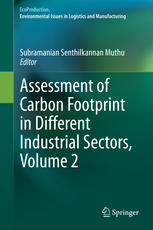

Most ebook files are in PDF format, so you can easily read them using various software such as Foxit Reader or directly on the Google Chrome browser.
Some ebook files are released by publishers in other formats such as .awz, .mobi, .epub, .fb2, etc. You may need to install specific software to read these formats on mobile/PC, such as Calibre.
Please read the tutorial at this link: https://ebookbell.com/faq
We offer FREE conversion to the popular formats you request; however, this may take some time. Therefore, right after payment, please email us, and we will try to provide the service as quickly as possible.
For some exceptional file formats or broken links (if any), please refrain from opening any disputes. Instead, email us first, and we will try to assist within a maximum of 6 hours.
EbookBell Team

4.3
78 reviewsFollowed by the previous part (Volume-1), Volume-2 of carbon footprint assessment book deals with the assessment of carbon footprint in different other sectors, which were not dealt in the first part. Attention on Carbon footprint is growing day-by-day from the public, government and media. Certainly it is one of the most important topics in the agenda of every nation, which is trying its best to reduce its carbon footprint to the maximum possible extent. Every manufacturing industry or sector would like to reduce the carbon footprint of its products and consumers are looking for the products which emit lower carbon emissions in their entire life cycle. Assessment of Carbon footprint for different products, processes and services and also carbon labeling of products have become familiar topics in the recent past in various industrial sectors. Every industry has its unique assessment and modeling techniques, allocation procedures, mitigation methods and labeling strategies for its carbon emissions. With this background, volume two of this book has been framed with dedicated chapters on carbon footprint assessment on various industrial sectors, apart from the ones covered in Volume 1. In each chapter, details pertaining to the assessment methodologies of carbon footprint followed in a particular industry, challenges in calculating the carbon footprint, case studies of various products in that particular industry, mitigation measures to be followed to trim down the carbon footprint, recommendations for further research are discussed in detail.